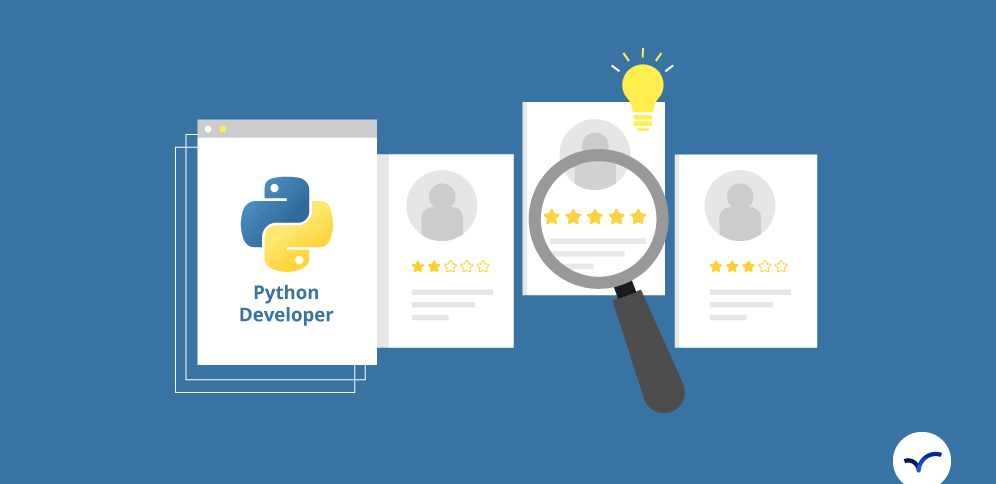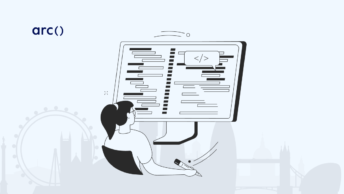See if this rings a bell —
In order to land the software job you want, you have to pass the technical interview. To pass the interview, you need to secure an interview. To secure the interview, you must be selected from the sea of other applicants vying for the attention of the recruiter or hiring manager.
And finally, to get selected, you’ve got to get noticed.
This is obvious stuff, but if you get this part wrong, it won’t matter how good you are at coding. Nobody will ever know. This also just happens to be where most developers make mistakes.
More worryingly, they don’t even realize it. Even if they’re wondering why they don’t hear back from job applications.
In this post, we’re going to walk through your profile and what you can do to get it noticed. And, not just your LinkedIn account, either — these tips will help you optimize your CV, bolster that engineering cover letter, and strengthen your GitHub profile, as well.
Let’s get to it, shall we?
Looking to hire the best remote developers? Arc can help you:
⚡️ Get instant candidate matches without searching
⚡️ Identify top applicants from our network of 350,000+
⚡️ Hire 4x faster with vetted candidates (qualified and interview-ready)
Try Arc to hire top developers now →
1. Specialize
You’re a generalist, I get it. I’m not saying you need to find some obscure niche to fill. I’m saying you need to give the person reading your profile a chance.
What is your preferred tech stack? What job are you looking for?
Terms like “Software Engineer,” “Programmer,” or “Developer” are great, but these terms don’t help your application. They’re too vague. If a recruiter is on the lookout for a full-stack developer, are you a fit?
Consider that the recruiter has a front end role using React. Do you use React? Perhaps you specialize in VueJS? The point is, your headline should state who you are and leave no doubt to the reader that they are in the right place. This applies to your CV or any profile like LinkedIn, GitHub, or even your web development portfolio.
Give them a reason to keep reading!
“Software Developer Specializing in React” is better than simply putting “Software Developer” as your headline.
In today’s market, as remote work explodes, employers are able to target their preferred developer and skill set with increasing precision. For instance, it used to be just Node and React. Now it’s Node and React with a preference for experience with a number of cloud services. If the chosen cloud service provider required by the role is AWS, then saying you’re a “Node, React, and AWS developer” entices the reader even further.
Consider that technologies such as serverless are increasingly popular. Making it clear you have experience in this area would see your profile gain significant interest. And that’s what you’re after!
2. Passion
You’ve finished the course, got the qualification, and the certificate is taking pride of place on your LinkedIn profile. You’ve done the hard work. Now, somebody needs to reward that effort by offering you employment, right?
Wrong.
The qualification allowed you access to the event, but now you’re just like everybody else who passed the test. From here on, it’s how you differentiate yourself from the others. If you are a senior developer, you can rely on the experience you’ve gained during your time within the industry. But, if you don’t have significant experience to showcase, you need to employ a different strategy. That strategy is passion!
Passion is not just buying the t-shirt or adding a logo to your personal site. It’s about showcasing that you’re not resting on your laurels.
You are making things happen. You are making inroads, building your personal site and brand. You are learning new technologies even with a busy schedule. Perhaps you have a side project or are contributing to open source? This level of proactivity is evidence of passion. Who would not want to support passion like this and offer opportunities to this kind of developer?
Make it clear through your GitHub, LinkedIn, personal blog, or even on your resume that you are not just waiting for the world to come to you. You’re going to make it happen. Make it easy for anyone interested in your profile to discover that evidence.
Read More: How to Network as a Remote Software Engineer
3. Technology First
I’m a fan of the phrase “Don’t make me read!” with regards to looking through a software developer’s CV or online profile. Tech recruiters and hiring managers shouldn’t have to (and won’t!) read the entire thing the first time through. Tell me who you are, where you’re going, and leave no doubt. If all goes well with that part, the reader is going to be interested in your experiences.
When reading this section, recruiters are interested in 3 things:
- When did you start using the required technologies?
- When did you most recently use the required technologies?
- How consistently have you been using the technologies?
Any reader will want to establish the answers to these questions before proceeding. The trick is to do so without requiring them to trawl through paragraphs of text to establish the answers to the above questions. This can be achieved by highlighting, or better still, moving the technologies used to the top of each experience. Hit them with it. If they like what they see and you look like a match, now they will actually read your profile.
Most developers fail at one of the above hurdles. Learning algorithms and data structures won’t help you. I’m not saying you won’t need them at a later stage, such as the interview, but when you’re failing to get interviews, it’s likely to be an error in one or more of the stages above.
4. Apply Directly
We have mentioned proactivity before, but there are other ways to demonstrate this trait. Applying for roles on job boards may feel like you are being proactive, but this is the beginner’s approach. To be truly proactive, you need to be ahead of the curve and apply before the role is even advertised.
We’ve all heard the phrase. Most companies will say “We’re not hiring, but if the right candidate comes along, we are always interested.” This strikes me as a cover for “We are hiring, but we’re not prepared to pay agency fees to get the right candidate.” Being proactive and dropping your CV in to them is a clever move.
Often, when the bar is set high on the requirements list for a role within the organization, the requirements can be relaxed where there is financial gain in not paying agency fees. Present yourself well and be targeted, almost ninja-like, about your approach, and you just might be surprised with a call or email to chat.
Read More: Best Questions to Ask at Software Development Job Interviews
5. Use Company Products
This one seems like a no-brainer at first glance. If you want a job at Amazon, use their tools in your projects. Not every company has a plethora of products for you to use like AWS, but in today’s market, lots of companies have public APIs, for instance. Building tools with their data is a cheeky little trick to getting noticed.
Consider this scenario: you are a React developer and would love to work at Strava, as you are passionate about fitness or cycling. Building an app utilizing their data makes a powerful demonstration. What better way to visualize you as an employee than to see your front-end skills showcased against their own platform data. It’s like the chair is warm already!
It doesn’t have to be data. Can you reimagine and redesign their website or jobs board? Could you develop an MVP of a product that would complement their current offering? The opportunities are endless, but you’ll have to tailor your choice to the company you’re applying to.
Read More: 21 Best Online Software Developer Groups to Join in 2022
Does Your Profile Stand Out to Recruiters?
The first three factors in standing out can be categorized as being clear, being concise, and having a career direction.
State it clearly.
Consider the reader and make it easy for them to understand who you are, where you are going, and your current skill set. If it’s not a current skill set, be clear about your aspirations, and do so efficiently — show a lot of passion.
To stand out, you need to be different. That means doing things that other candidates just won’t do. Applying directly and showcasing your skills using company products is refreshing and noteworthy, and that’s what we’re after, right?
Thanks for reading this short guide on how to get your profile noticed with tech recruiters and hiring managers. We do hope it helps you score some more interviews!
As always, thanks for reading, and if you have any questions or other great tips for software engineers looking to get their LinkedIn or GitHub to stand out, let us know in the comments below.
You can also explore HireAI to skip the line and:
⚡️ Get instant candidate matches without searching
⚡️ Identify top applicants from our network of 350,000+ with no manual screening
⚡️ Hire 4x faster with vetted candidates (qualified and interview-ready)








